What is the History of Fairground Art?
Funfairs and fairgrounds are a feast for all of the senses! The lights and colours, the movement, the sound of rides and music, and the smell and taste of sweet treats and concessions can almost bring on a sensory overload!
One of the most iconic features of the fairground is the artwork that adorns rides and attractions. Bold graphics create enticing amusements; some funfair attractions even have artwork that showcases what you can expect to see within the ride itself, such as with Ghost Trains or the Video Game Funhouse. There are rides with design schemes that make them well-suited for Christmas fairgrounds, or lovers' rides that are well-suited to Valentines' Day events. But what is the story behind fairground art?
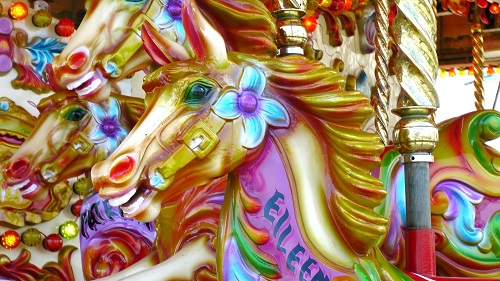
Artwork for Early Travelling Funfairs
Fairground operators always tried to attract people to their businesses through the promise of an immersive experience, and one of the first examples of this was through banner advertisements. These aren't the online banner ads we're familiar with in the 21st century, but were printed fabrics that could be quickly manufactured, transported and set up. Banners could be used for temporary advertising in town squares or could be draped over the funfair rides themselves to showcase what awaited inside.
As we saw in the history of the funfair, fairgrounds boomed in the industrial age, with advancing technology finding eager customers in carnival and amusement ride operators. Another key development was the improvement of roadways and the creation of new transportation techniques such as rail or motorised vehicles, which enabled funfair operators to transport much larger rides.
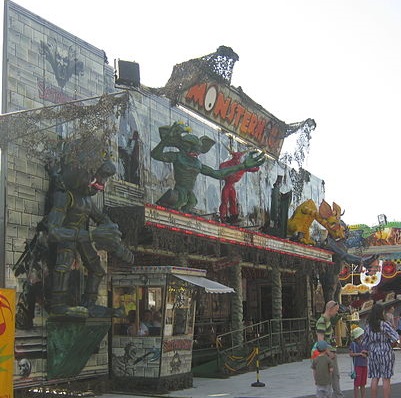
As the rides grew in size, banners ceased to be enough to cover them, and fairground operators sought bigger options. Soon, decorations began to be attached to wooden supports, and it wasn't long until intricately-carved wood became the favoured medium for fairground artwork.
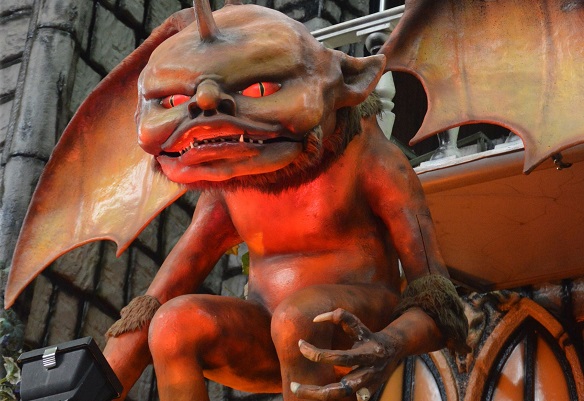
Sculptures and paintings frequently displayed objects of Victorian obsession, with fairgrounds intending to offer visitors a taste of the exotic, profound or mysterious. Common themes included the jungle, mythology or the ancient world.
The Modern Age
As the funfair moved into the 20th century, wooden fairground rides became less commonplace, with durable, resilient and versatile iron and steel becoming an established favourite. This encouraged the use of paintwork, with carriages and designs featuring sculptures and flourishes rather than the exterior of rides. Many of these historic fairground amusements are still in use today, such as Victorian carousels or.vintage Ferris wheels.
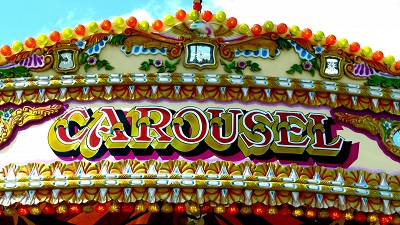
Artwork continued to reflect the styles and tastes of the time, with designs of an increasing complexity becoming cheaper and easier to produce. Designs went from Art Deco to Rock and Roll, and from the Space Race to the Virtual World.
A big influence on modern day fairground artwork was the development of trailer-mounted funfair rides such as the Miami Trip or modern funhouses, plus the increasing popularity of Airbrush technology. These flat surfaces enabled artists to create more naturalistic designs reminiscent of wall murals and street art, and airbrushing remains one of the most popular funfair artwork styles to this day.
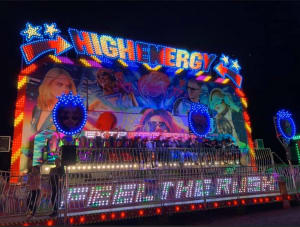
The next seismic shift in funfair artwork came as computers became cheaper and more commonplace. Digital prints and designs began to make a feature, with vinyl printing proving a cheap and effective way to decorate fairground rides.
Simultaneously, the travelling funfair began to offer more thrill and white knuckle rides, wherein visual appeal ceased to be as important. These fairground attractions instead seek to show riders the limit of what modern technology can do, subjecting them to dizzying forces, high speeds and incredible heights.
Modern-day funfairs frequently contain a hodgepodge of design schemes, with traditional carousels standing shoulder-to-shoulder with airbrushed graphics. The contemporary era has also seen a harkening for a return to traditional designs, with many Victorian-era rides lovingly restored.
If you have any questions about the funfair, please contact We Are Tricycle!